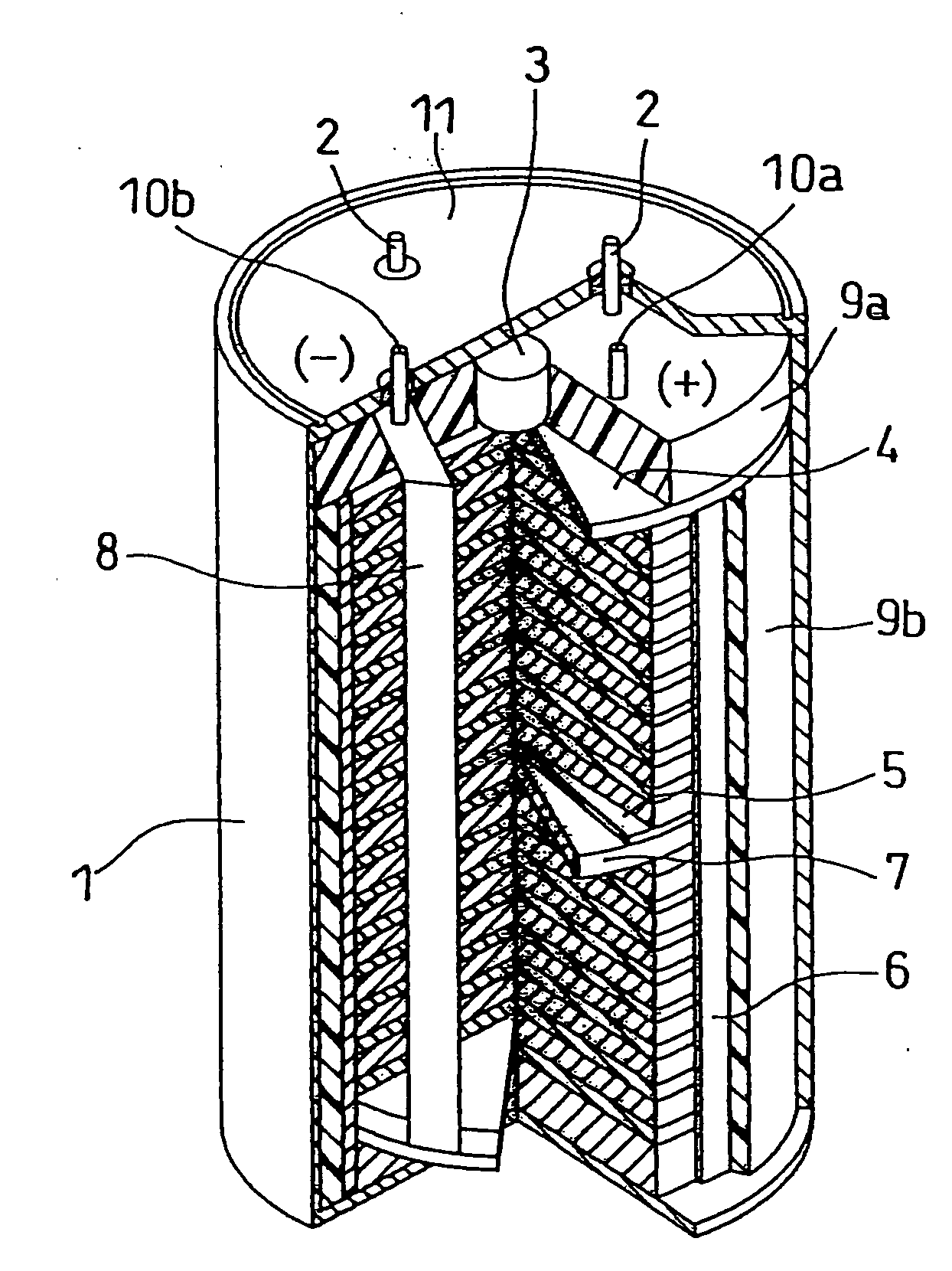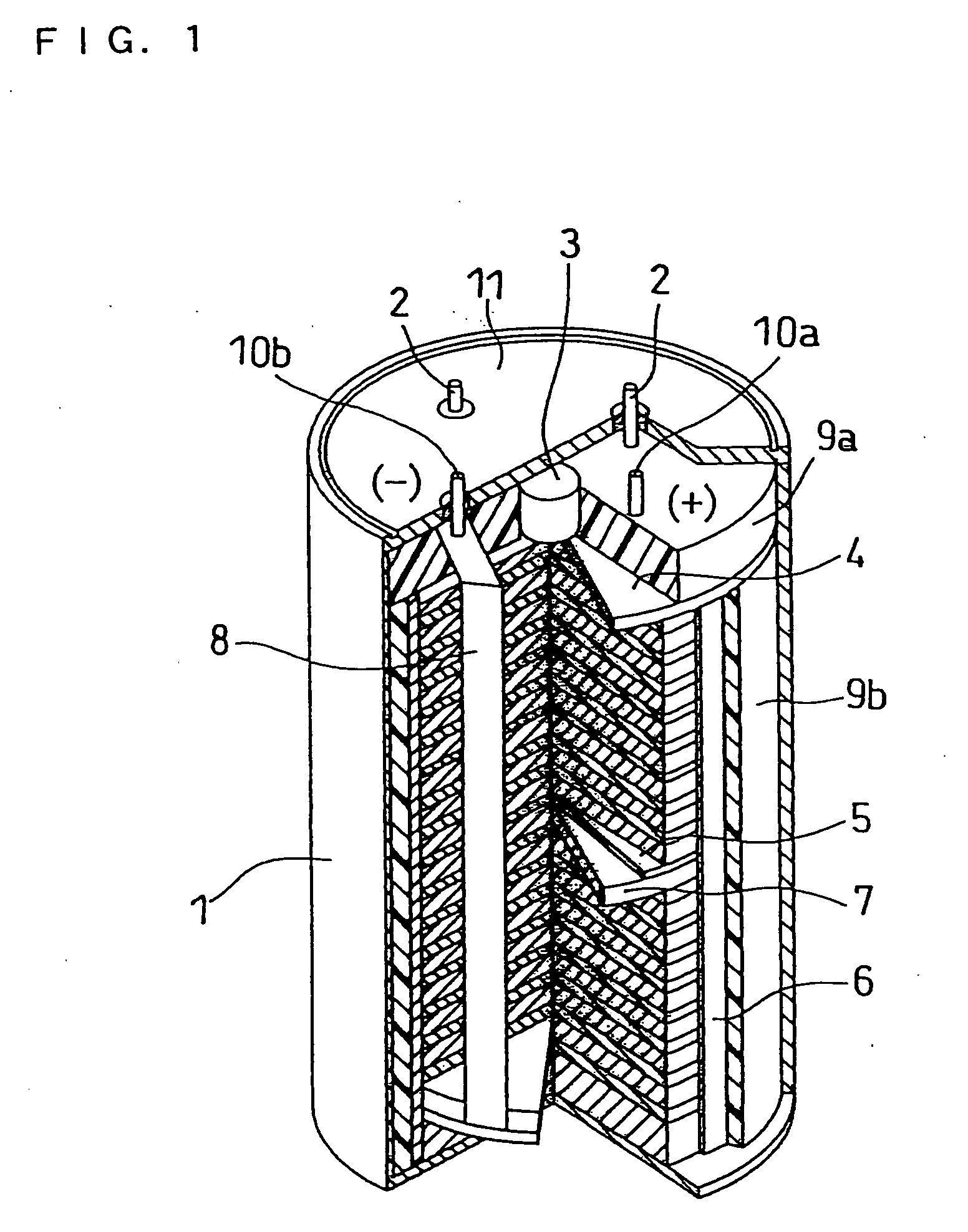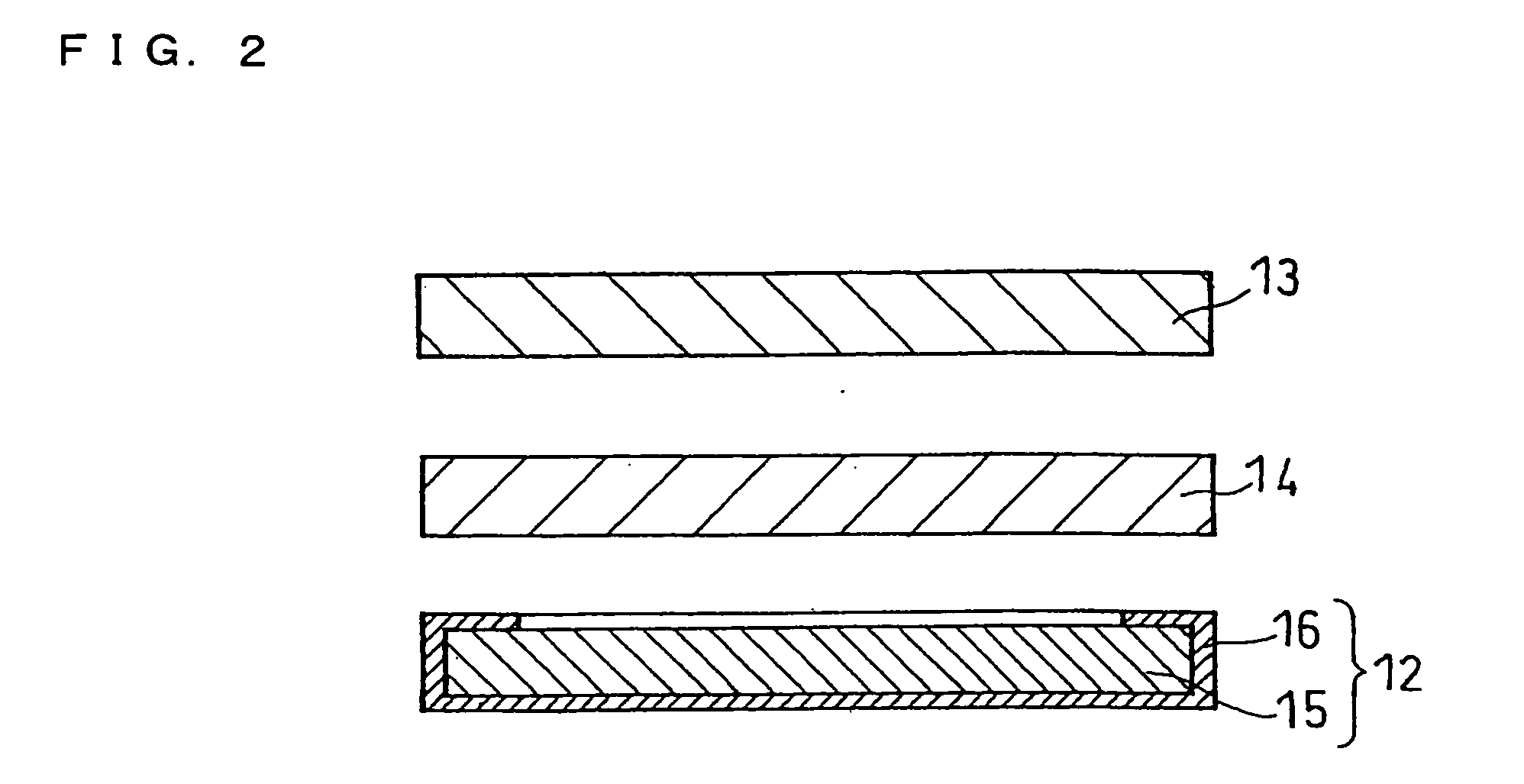Molten salt and thermal battery
- Summary
- Abstract
- Description
- Claims
- Application Information
AI Technical Summary
Benefits of technology
Problems solved by technology
Method used
Image
Examples
embodiment 1
[0061]In a preferred embodiment of the molten salt of the present invention, the first salt includes LiF, LiCl, and LiBr, and the second salt includes at least one salt selected from the group consisting of NaF, NaCl, NaBr, KF, KCl, KBr, RbF, RbCl, RbBr, CsF, CsCl, and CsBr.
[0062]Examples of a preferable salt combination include, LiF—LiCl—LiBr—NaF, LiF—LiCl—LiBr—NaF—KCl, LiF—LiCl—LiBr—NaCl, LiF—LiCl—LiBr—NaCl—KBr, LiF—LiCl—LiBr—NaBr, LiF—LiCl—LiBr—NaBr—KCl, LiF—LiCl—LiBr—KF, LiF—LiCl—LiBr—KF—NaF, LiF—LiCl—LiBr—KCl, LiF—LiCl—LiBr—KCl—KBr, and LiF—LiCl—LiBr—KBr. Among these, a molten salt with the second salt content of mol % or less is particularly preferable.
embodiment 2
[0063]In another preferred embodiment of the molten salt of the present invention, the first salt includes two salts selected from the group consisting of LiF, LiCl, and LiBr, and the second salt includes at least one salt selected from the group consisting of NaF, NaCl, NaBr, KF, KCl, KBr, RbF, RbCl, RbBr, CsF, CsCl, and CsBr.
[0064]In this embodiment, when the first salt includes LiF and LiCl, the second salt preferably includes at least one salt selected from the group consisting of NaF, NaCl, NaBr, KF, KCl, KBr, and RbCl. Particularly, the second salt further preferably includes at least one of NaBr and KF. In this case, a preferable salt combination includes, for example, LiF—LiCl—NaBr and LiF—LiCl—KF.
[0065]When the first salt includes LiF and LiBr, the second salt also preferably includes at least one salt selected from the group consisting of NaF, NaCl, NaBr, KF, KCl, RbF, and CsF. Particularly, the second salt further preferably includes a Na-containing salt such as NaF, NaCl...
embodiment 3
[0068]In still another preferred embodiment of the molten salt of the present invention, the first salt includes at least one salt selected from the group consisting of LiF, LiCl, and LiBr, and the second salt includes at least one salt selected from the group consisting of NaF, NaCl, NaBr, KF, KCl, KBr, RbF, RbCl, RbBr, CsF, CsCl, and CsBr.
[0069]In this embodiment, when the first salt includes LiCl, the second salt preferably includes at least one salt selected from the group consisting of NaF, NaCl, NaBr, KF, KCl, KBr, RbF, and CsF. In this case, a preferable salt combination includes, for example, LiCl—NaBr—KF and LiCl—NaBr—CsF.
[0070]When the first salt includes LiBr, the second salt preferably includes at least one salt selected from the group consisting of NaF, NaCl, NaBr, KF, KCl, and CsF. Particularly, the second salt further preferably includes KF. In this case, a preferable salt combination includes, for example, LiBr—KF—NaCl and LiBr—KF—NaBr.
PUM
 Login to View More
Login to View More Abstract
Description
Claims
Application Information
 Login to View More
Login to View More - R&D
- Intellectual Property
- Life Sciences
- Materials
- Tech Scout
- Unparalleled Data Quality
- Higher Quality Content
- 60% Fewer Hallucinations
Browse by: Latest US Patents, China's latest patents, Technical Efficacy Thesaurus, Application Domain, Technology Topic, Popular Technical Reports.
© 2025 PatSnap. All rights reserved.Legal|Privacy policy|Modern Slavery Act Transparency Statement|Sitemap|About US| Contact US: help@patsnap.com



